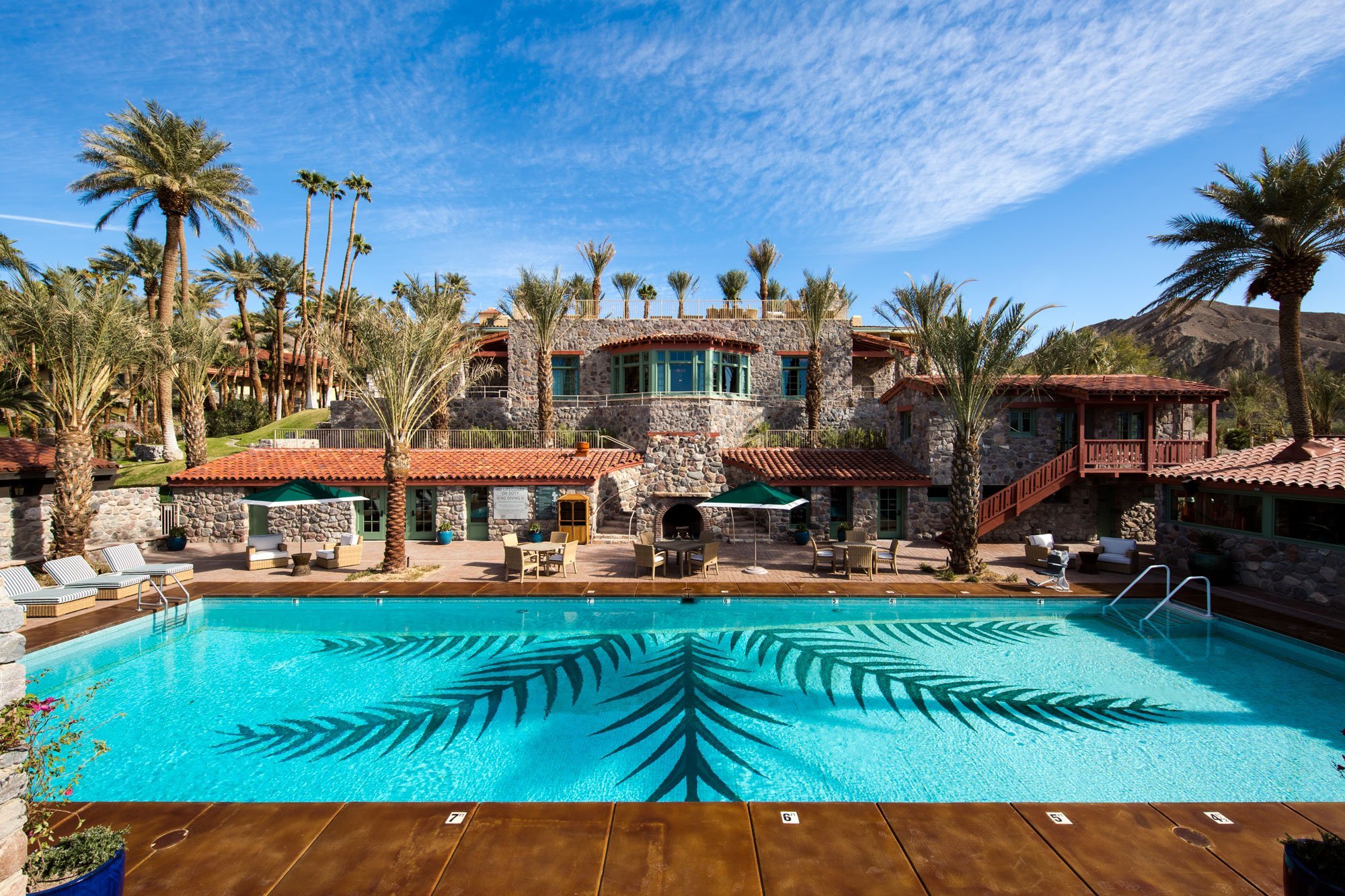Multi-million-dollar renovations blend historic preservation with exclusive accommodations.
When people think of America’s national parks, they picture epic landscapes—the view across the Grand Canyon, the desert expanses of Death Valley, and the mountain lakes of Glacier. Or such iconic natural wonders as Yellowstone’s Old Faithful geyser. But architecture is also a big part of the experience, especially at the legendary lodges that date to the parks’ earliest days.
There’s even a word for this architectural genre: Parkitecture. And so Xanterra Travel Collection® strives to preserve the character of its national park hotels, while updating the buildings with modern comforts and employing sustainability measures to protect the environment for future generations.
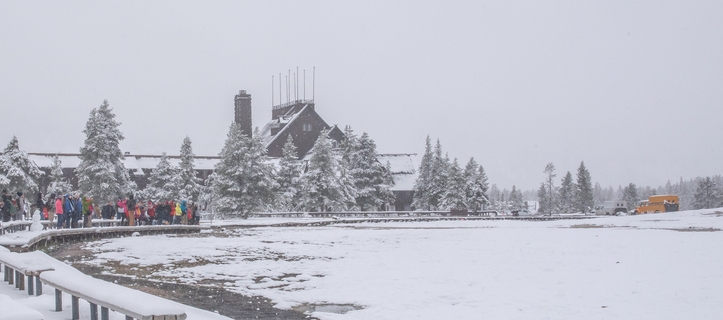
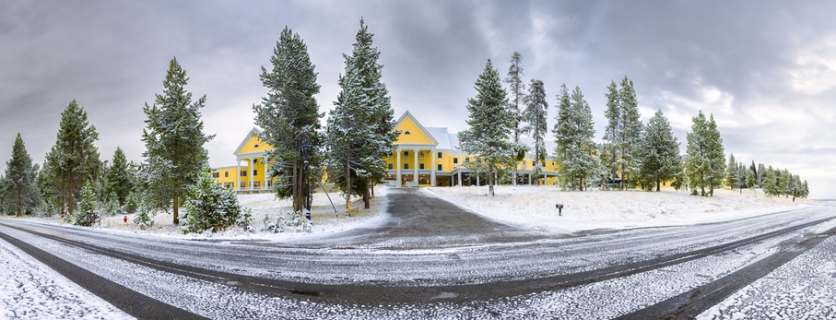
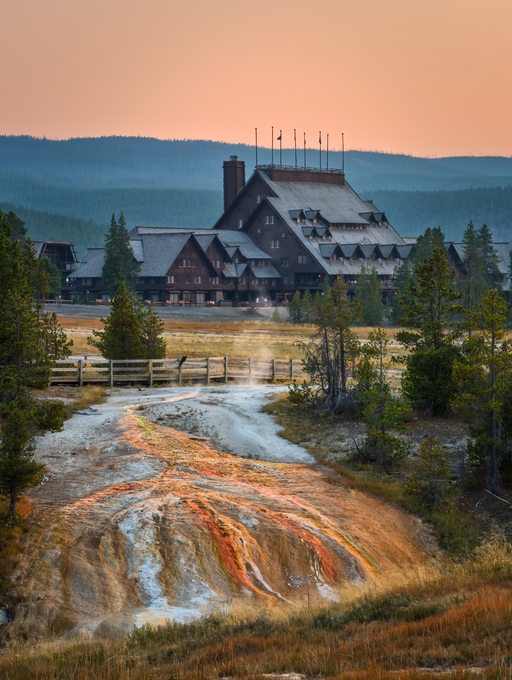
Yellowstone National Park
The country’s oldest national park, Yellowstone is home to iconic lodges where you can immerse yourself in history.
Consider Old Faithful Inn, a national historic landmark built in 1903-04. Constructed from local rhyolite stone and lodgepole pine, it’s the world’s largest log building. Designed by architect Robert Reamer, Old Faithful Inn is renowned for the exquisite craftsmanship of its soaring lobby, especially the 500-ton central fireplace and the rough-hewn railings and beams that give the seven-story space a rustic grandeur. A highlight of any stay is dinner at the Old Faithful Inn Dining Room, which is notable for its woodsy elegance and the use of sustainable, organic ingredients sourced locally whenever possible.
Forty miles away, Lake Yellowstone Hotel has a very different look. Opened in 1891, the hotel was originally a simple clapboard structure but now is celebrated for its Colonial Revival design, including a grand entrance with a row of stately white columns. Sunlight streams through the lobby and you can gaze out on Yellowstone Lake from the comfort of an armchair in the elegant Sunroom. The hotel underwent a $28 million renovation, and rigorous Earth-friendly measures earned it gold-level sustainability certification from Green Seal, a non-profit promoting environmentally sensitive design and business practices.
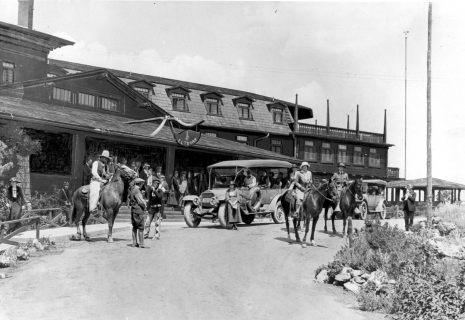
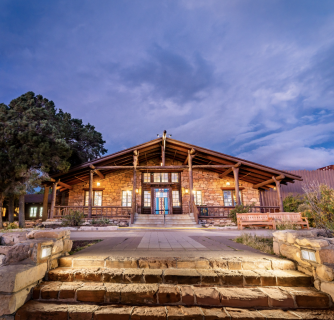
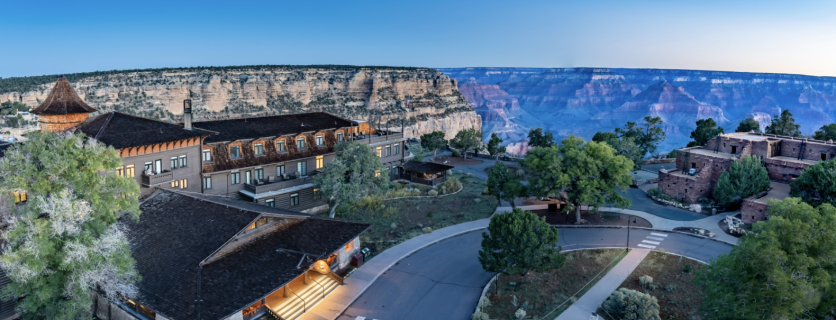
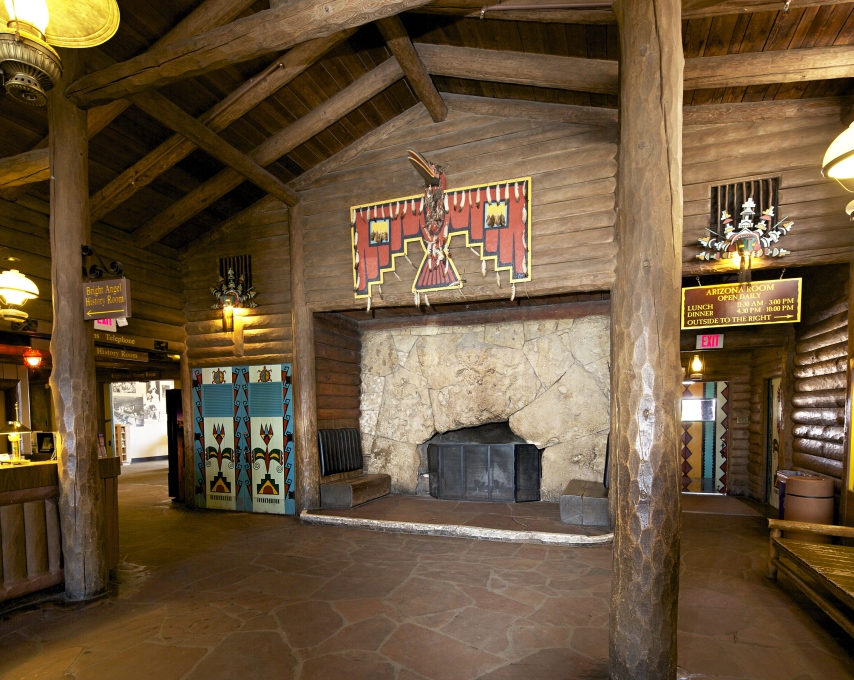
Grand Canyon National Park
With numerous structures enshrined as national historic landmarks, the Grand Canyon is the country’s top destination for parkitecture. The grandest of all is El Tovar Hotel, a 1905 building that blends Swiss Chalet, Norwegian villa, and Victorian design details with a Southwestern soul.
You enter from a front porch constructed of local limestone and into an intimate cabin-style lobby with peeled log posts and historic Grand Canyon paintings. Legendary architect Mary Colter created the lobby’s interior design and it’s the perfect place to soak up the classic national park ambience—although you’ll also want to settle in on a rocker along El Tovar’s many porches, including one barely 25 feet from the rim.
Another must is a meal in the El Tovar Dining Room, where vintage murals depict Arizona tribes and the menu showcases regionally inspired favorites, from blue cornmeal pancakes to signature salmon tostadas. In keeping with Xanterra’s environmental commitment, the dining room is a certified green restaurant.
A further representation of historic lodging at the Grand Canyon is Bright Angel Lodge. A rustic complex of cozy cabins around a central lodge building, also designed by Colter, sits directly on the edge of the canyon at the foot of Bright Angel Trailhead.
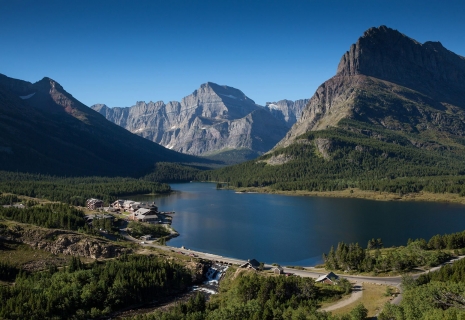
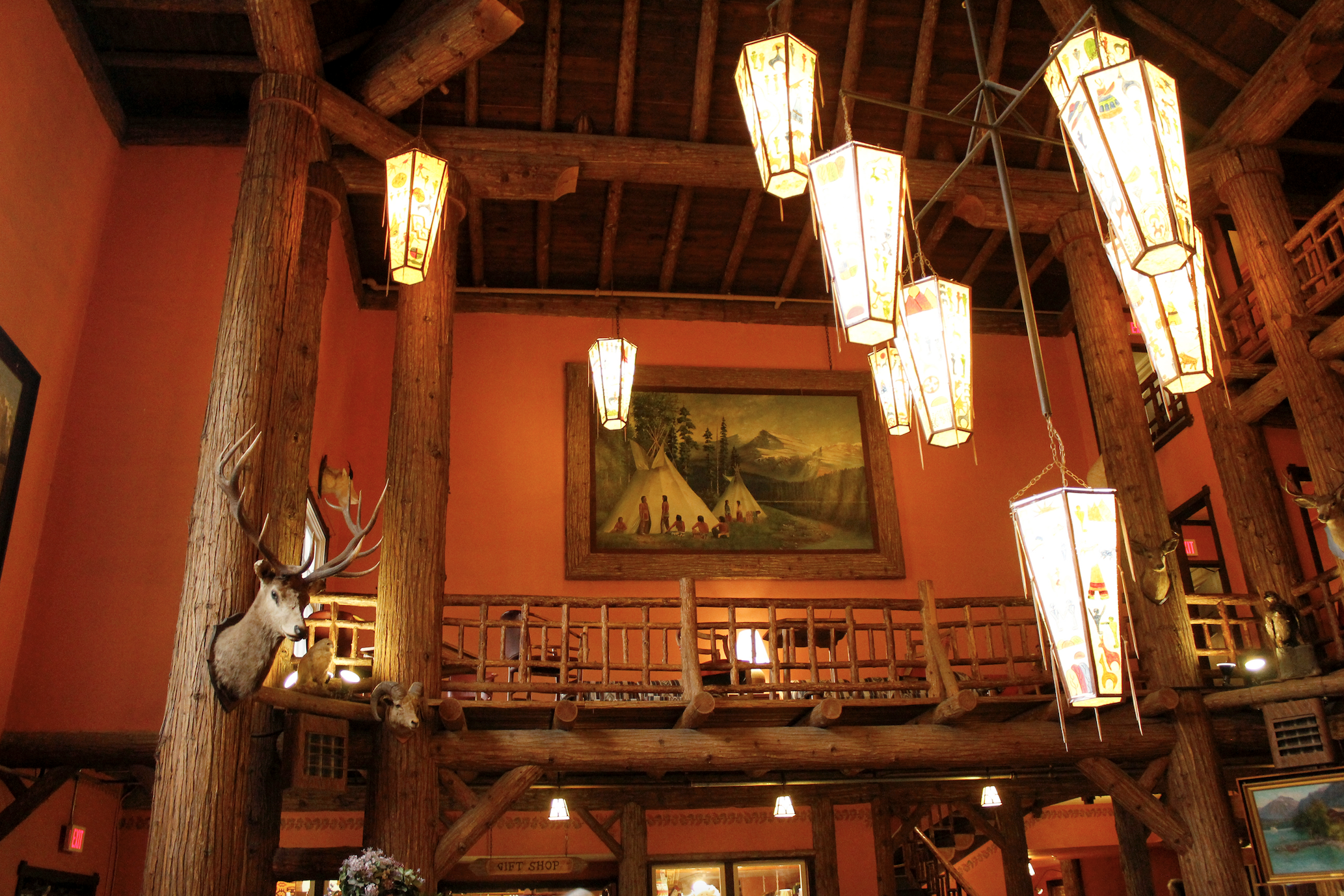
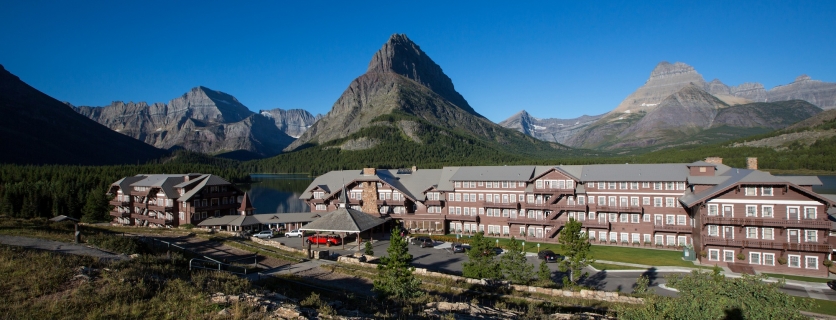
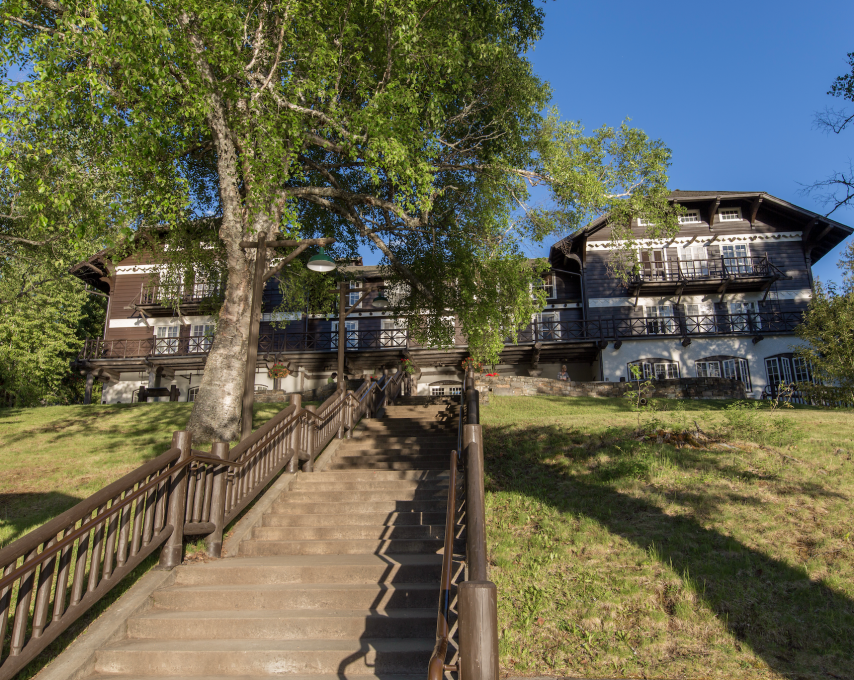
Glacier National Park
Designed in a Swiss Chalet-style consistent with the area’s longstanding identity as the “Switzerland of America,” Glacier National Park’s grand dame is the Many Glacier Hotel. Opened by the Great Northern Railway in 1915, the hotel along Swiftcurrent Lake was constructed using Douglas fir logs brought in from the Pacific Coast and local wood cut at a nearby sawmill. Sections of the roofline seem to echo the angles of the surrounding peaks. And as spectacular as the hotel’s lake and mountain views may be, so too is the impeccably restored lobby. Inside you’ll find a wooden double helix stairway (the original was removed in the 1950s), Japanese lanterns, and a stone fireplace with a chimney that rises to the elaborate vaulted ceiling. Some have likened the lobby’s grace to that of a cathedral.
Two hours away, Lake McDonald Lodge also has a Swiss Chalet look but it’s frontier-style interior draws inspiration from the park’s indigenous tribes. Look down at the imitation flagstone floor and you’ll see messages in Blackfoot, Chippewa, and Cree, while Native American designs adorn the large fireplace and hanging lanterns in the lobby. One curiosity is that the main entrance might seem more modest than the rear of the hotel, which faces the lake. That’s because in the lodge’s early years, most guests arrived by boat. Enshrined as a UNESCO World Heritage Site, Glacier is truly one of the Earth’s special places. So Xanterra employs important environmental measures here, including extensive recycling and a requirement that contractors divert at least 50 percent of all construction debris from landfills.
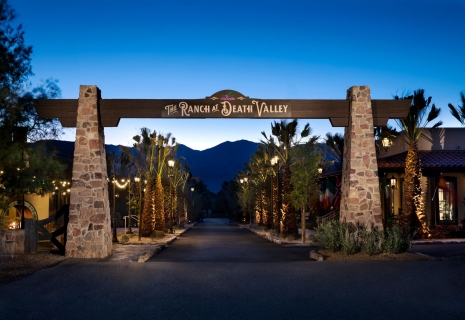
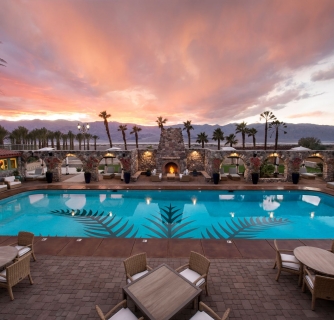
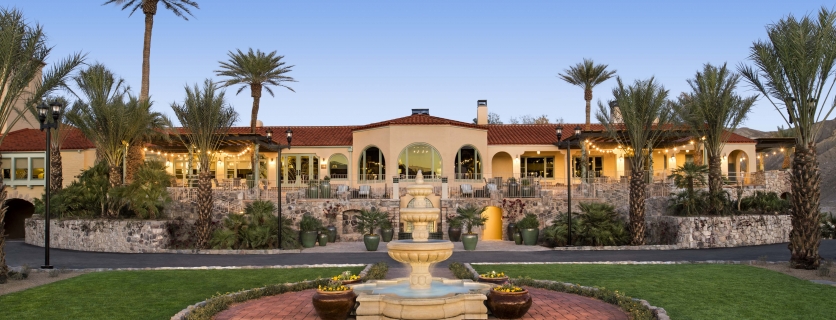
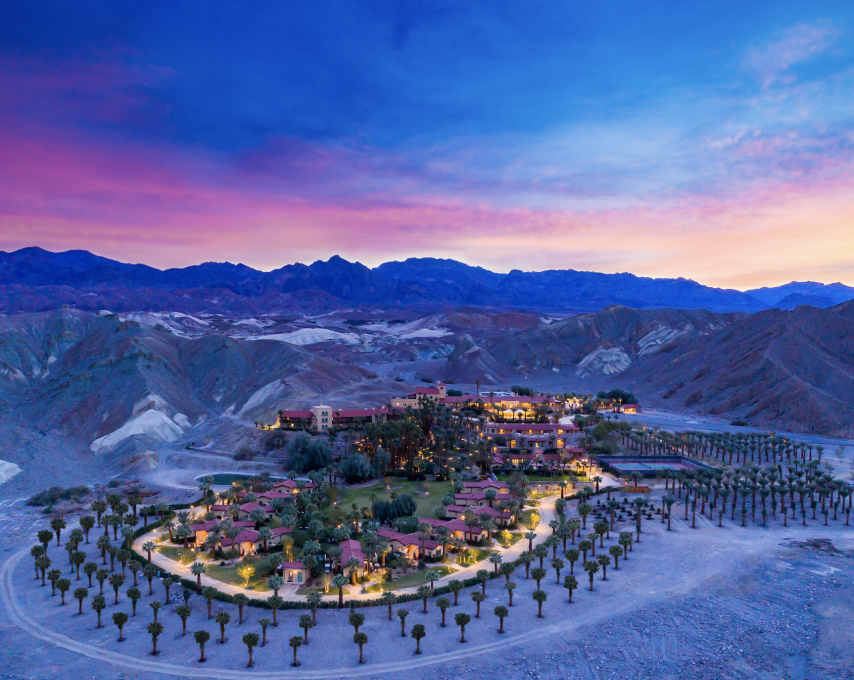
Death Valley National Park
Take nearly a century of history, add $250 million in improvements, and you have The Oasis at Death Valley, a world-class desert resort that’s better than ever. Designed by prominent architect Albert C. Martin (he also worked on Los Angeles City Hall); the original Mission-style structure built with adobe bricks has grown from 12 rooms into the luxurious Inn at Death Valley. Set in a palm-shaded oasis, The Inn is famous for its natural, spring-fed swimming pool, which remains perpetually in the mid-80s, and views that look across Death Valley to the Panamint Range.
While adding elegant casitas, the renovation project not only retained but enhanced The Inn’s historic character, as well as that of its sister property The Ranch at Death Valley.
The Ranch’s cozy cottages and a redesigned town square add to the resort’s Spanish character. And not all of the improvements are immediately apparent: Greater efficiency and recycling efforts mean that there is no net increase in the resort’s water usage and the careful placement of low-wattage lighting helps preserve the dark skies that have made Death Valley a globally significant stargazing destination.
For more travel experiences available from Xanterra Travel Collection® and its affiliated properties, visit xanterra.com/stories.


